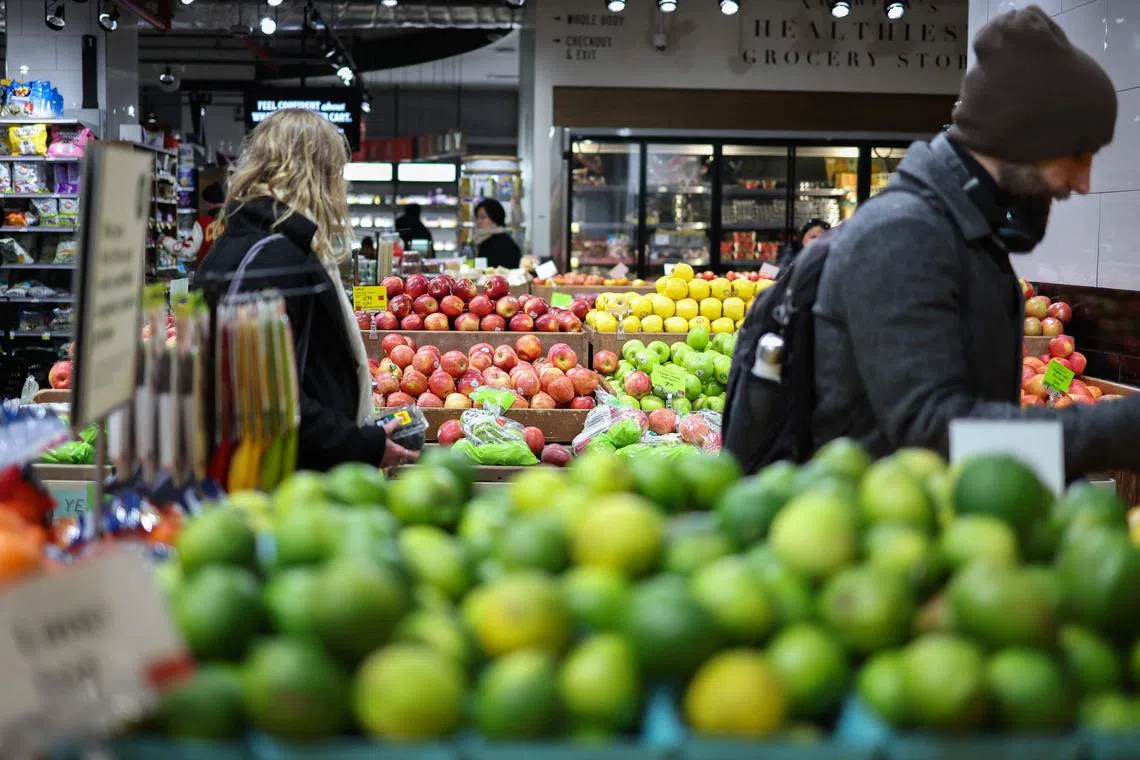US consumer spending drops in May, price pressures remain muted
Sign up now: Get ST's newsletters delivered to your inbox

Personal consumption expenditures fell 0.3 per cent after adjusting for inflation, according to Bureau of Economic Analysis figures.
PHOTO: AFP
Follow topic:
US consumer spending declined in May by the most since the start of the year, indicating elevated uncertainty around the Trump administration’s economic policies is increasingly weighing on the outlook for growth.
Personal consumption expenditures fell 0.3 per cent after adjusting for inflation, according to Bureau of Economic Analysis figures published June 27. The Federal Reserve’s preferred inflation gauge, the PCE price index minus food and energy, rose 0.2 per cent – slightly more than expected, though still consistent with limited price pressures.
The decline in spending, which was broad-based, coincides with declining consumer sentiment this year in response to President Donald Trump’s unpredictable trade policy. Inflation has been muted so far in 2025, though many economists expect that it will pick up in the next few months as businesses increasingly pass higher import duties on to households.
The latest figures suggest sluggish household demand, especially for services, extended into May after the weakest quarter for consumer spending since the onset of the pandemic.
Spending declined on transportation services, meals out and accommodation, financial services, and other services – a category that includes net foreign travel.
Motor vehicle purchases declined 6 per cent, reversing some of the surge in March and April when consumers were rushing to get ahead of tariffs.
Wages, Inflation
Personal income, meanwhile, fell in May by the most since 2021 on a pullback in government transfers, led by a decrease in Social Security payments. The saving rate fell to 4.5 per cent.
Wages climbed 0.4 per cent for a second month, extending a recent run of solid increases. That indicates consumers have the wherewithal to continue spending. However, a sustained slowdown in household demand risks spilling over into a downshift in job growth.
The inflation data showed goods prices excluding food and energy increased 0.2 per cent, a slight deceleration from a month earlier. Core services prices – a closely watched category that strips out housing and energy – edged up just 0.1 per cent after a flat reading in April.
Fed Chair Jerome Powell told lawmakers this week that he expects inflation to pick up in June, July and August as tariffs become increasingly reflected in consumer prices, though he added if that prediction fails to materialise, the US central bank could resume interest-rate reductions sooner rather than later.
Fed governors Christopher Waller and Michelle Bowman – both appointed by Mr Trump – have said they could support a rate cut as soon as the next policy meeting on July 29-30 if inflation remains muted.
The Bureau of Labour Statistics will offer the first look at June consumer price data on July 15. Investors are currently betting the Fed’s next rate reduction will come in September, according to futures. BLOOMBERG

